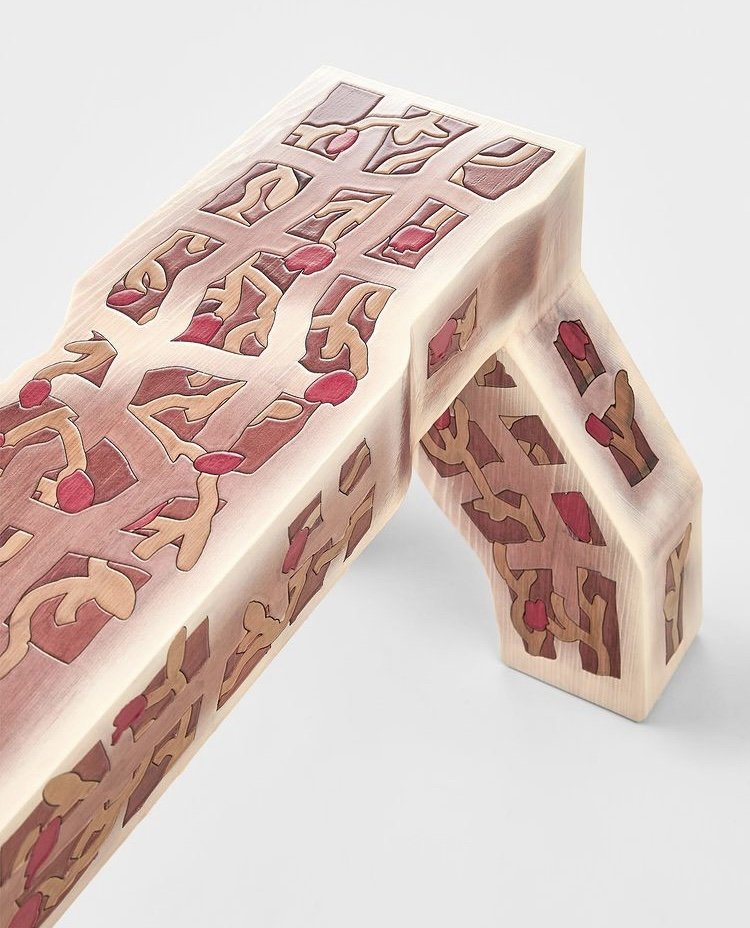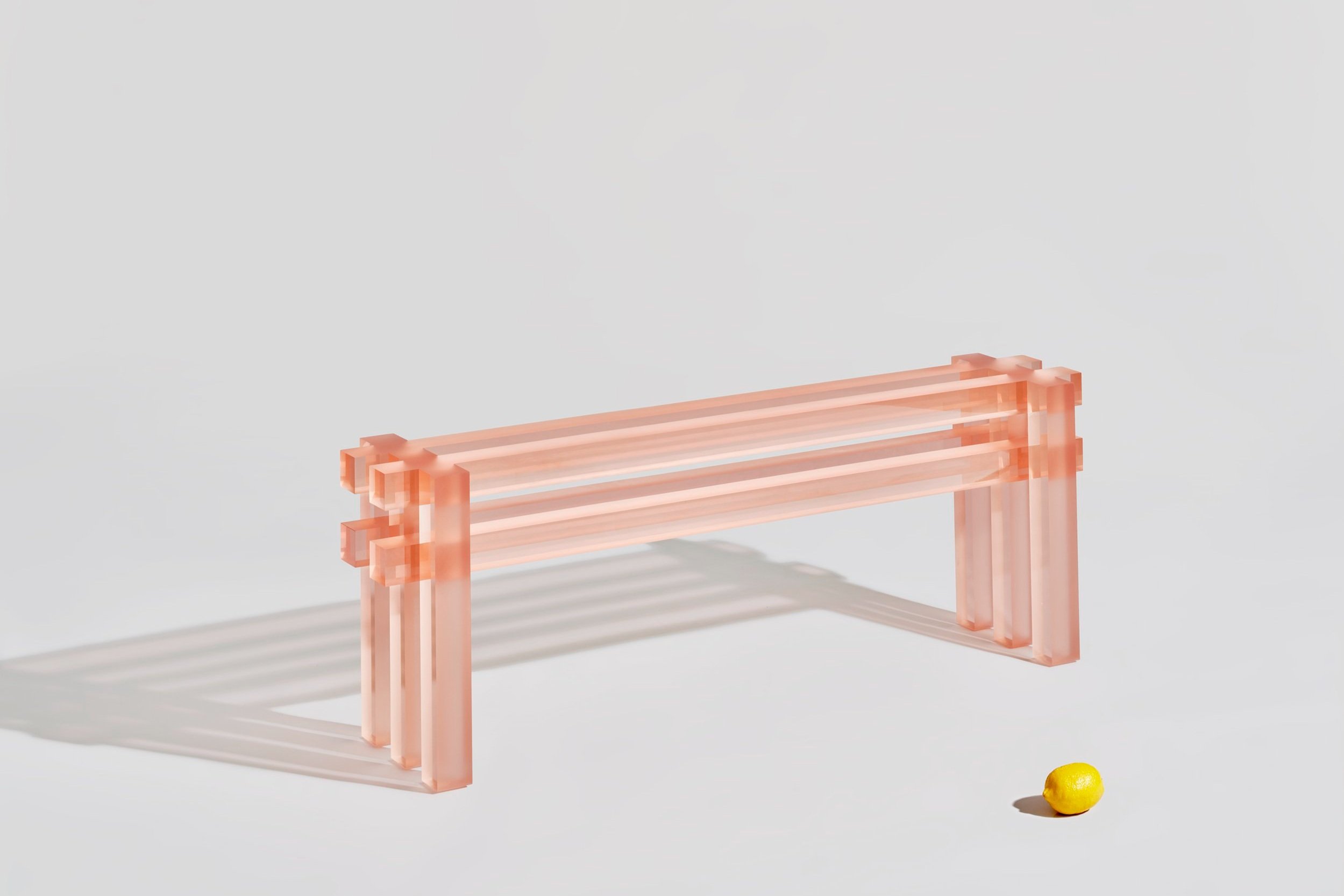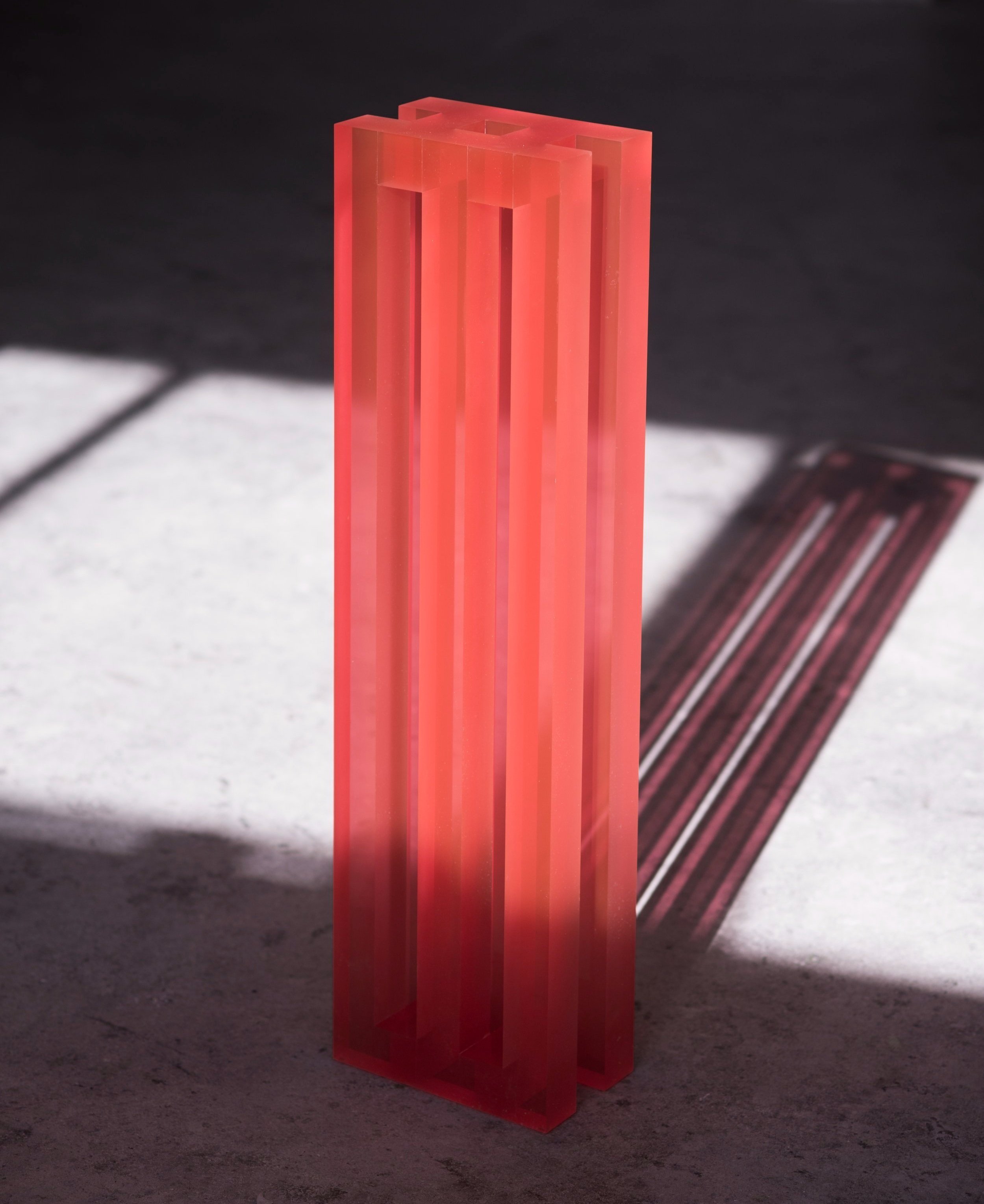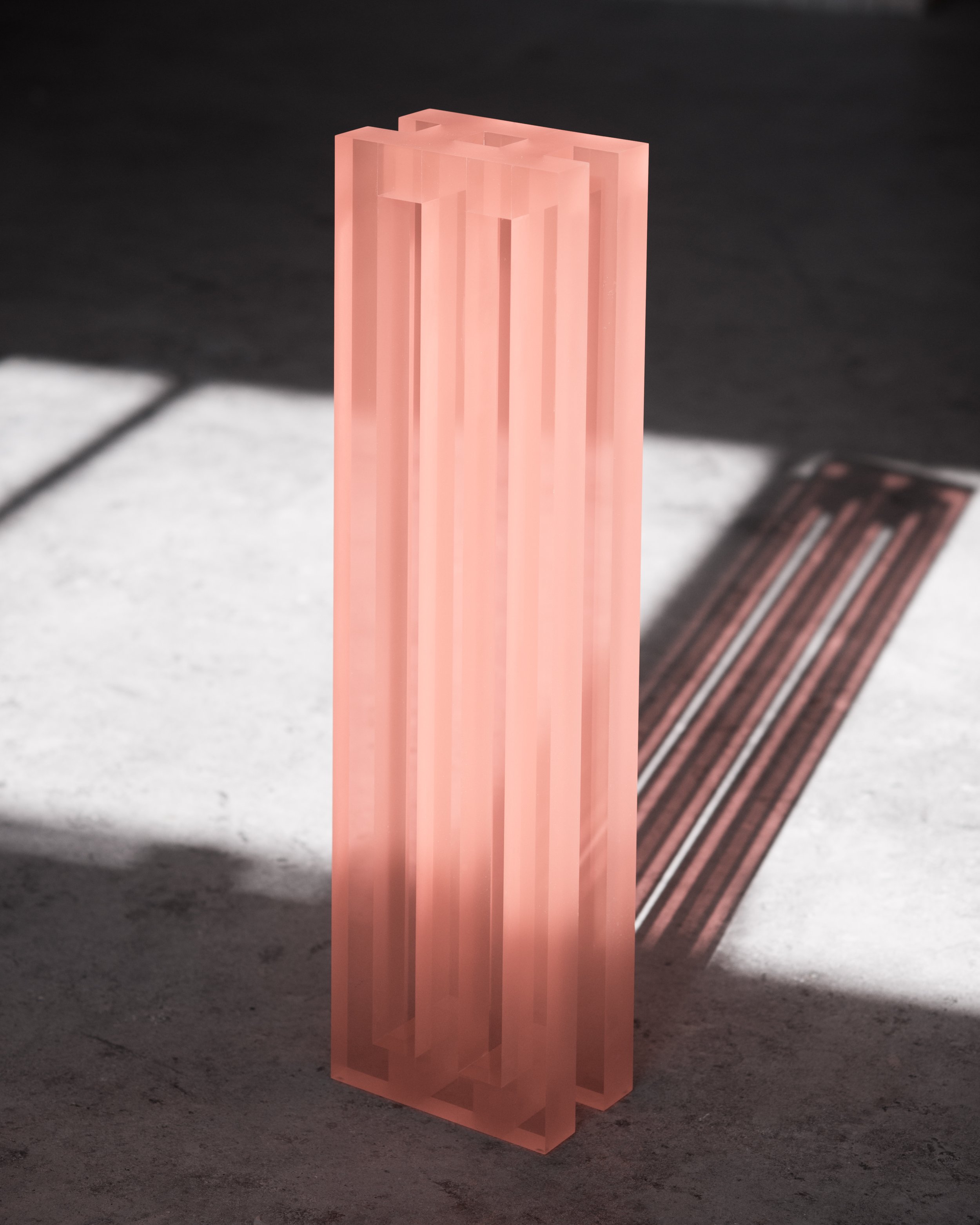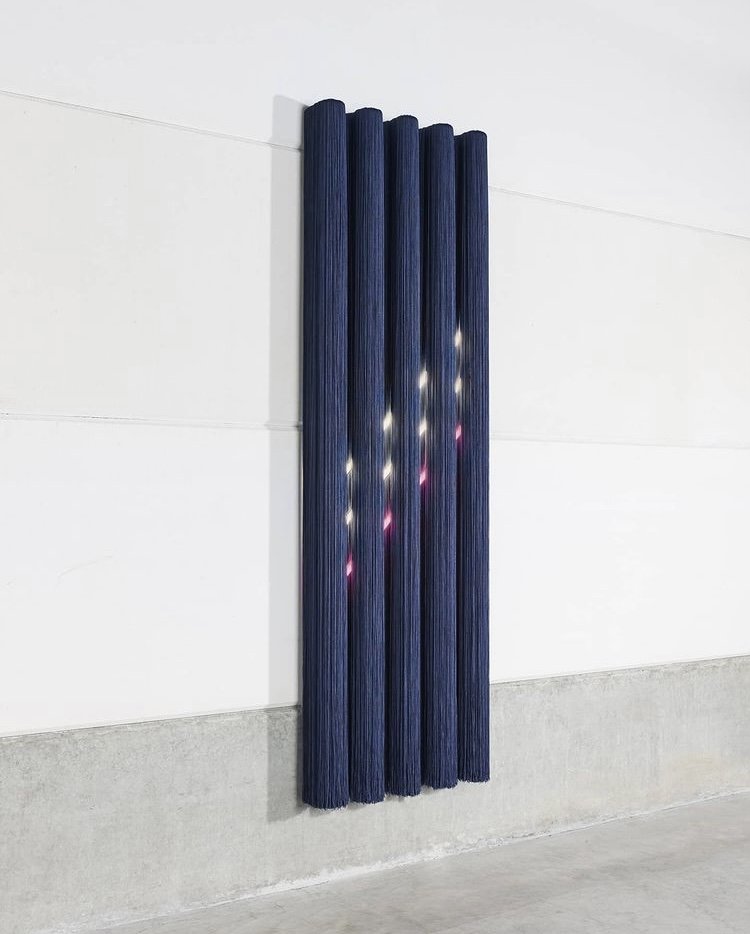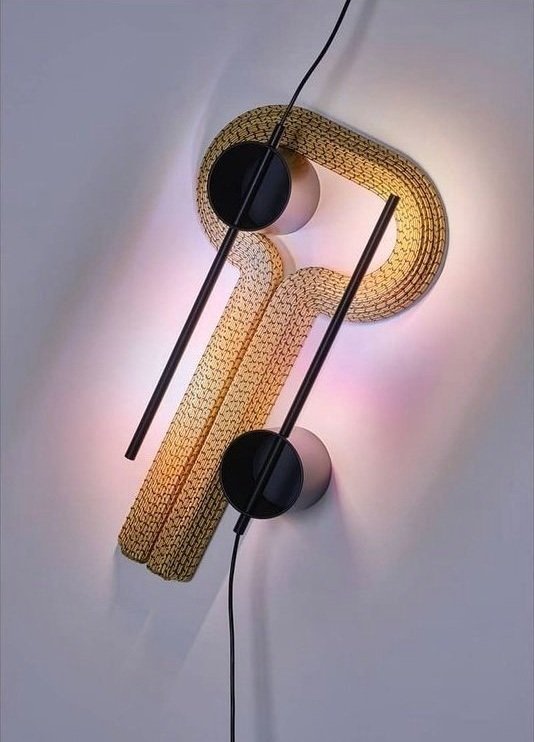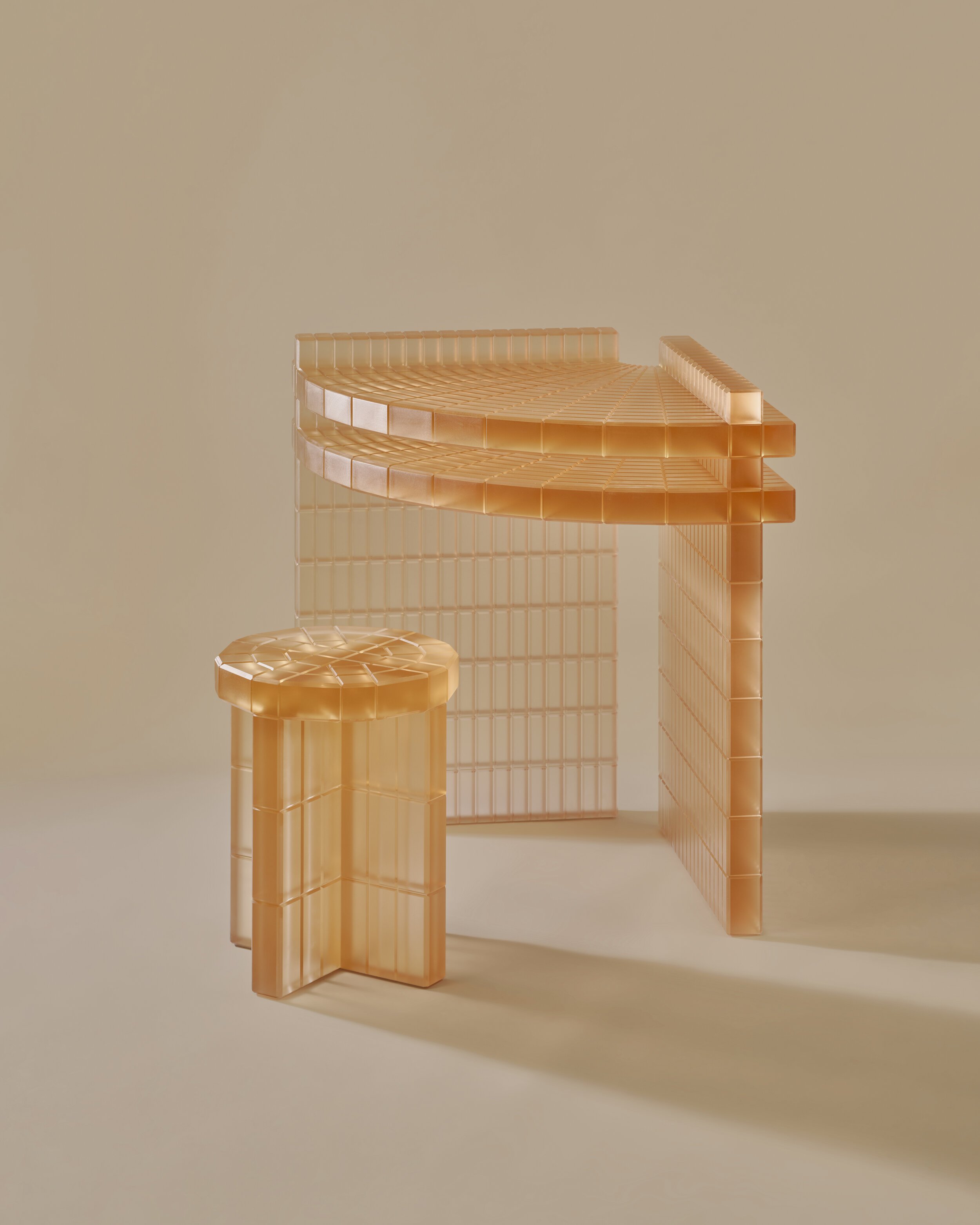DESIGNER PROFILE: Laurids Gallée
The many sides of Laurids Gallée
We introduce you to Laurids Gallée, a Rotterdam based designer who takes an artists approach to his work. Gallée’s standing collections, Tralucid and Metropolis, are furniture made of coloured resin, that aim to build architectural objects from simple transparent building blocks, highlighting the internal structure. The designer is however always busy continuously enriching his practice through commissioned works for galleries, events and private clients.
His practice explores traditional and folkloric elements to enter modern materiality, while always considering today’s advanced manufacturing processes to create a contemporary fusion. With a body of work that has little limitations to media but an attention to colour and a reoccurring emphasis on strong line, Laurids’ work results in pieces that range somewhere between artistic exploration, sculpture and furniture design.
Gallée grew up in a family of artists in Vienna, Austria, where he was exposed to different creative fields from early childhood. After initially rejecting creativity and briefly studying anthropology in his home town, he moved to the Netherlands to study at the Design Academy Eindhoven, where he graduated in 2015. Gallée spent the following years learning different manufacturing techniques as a craftsman in art and design production and in 2017 started his own studio.
His output is always narrative driven and draws from personal experience, often referencing his childhood. It is both an exciting gaze and lens that Laurids applies. His first solo show ‘fireworks etc.’ presented at Tableau in Copenhagen, 20th October - 4th December 2021, is an absolute extension of this and showcases the designers illustrative side.
‘fireworks etc.’ explores the connection between Denmark and the Netherlands through the language of flowers. Through seven new works Gallée reflects on the international bonds formed by the trade of flowers, the stories, sagas, and myths which creates shared heritage around blooms and the intersections between art, commerce and craft.
The works are all a direct translation of Gallée’s personal drawings and doodles. The designer says, “the work is quite different to my normal design work, but something I’m quite passionate about and that I’ve been wanting to kickstart for a very long time.”
Works presented (shown below left, clockwise) include: old vase, cash cradle, dots and plants, thieves, explosions in the sky, garden bench and unfortunate situation.
Images by: Michael Rygaard and Mathijs Labadie
Inspired by marquetry techniques of the Austrian & Bavarian ‘bauernmöbel’, farmhouse furniture which he fell in love with while visiting his grandparents as a child in Austria, the new age marquetry that he creates focuses on storytelling over practical function.
Laurids explores a whole new range of materials and techniques, using ink & laser-cutting techniques to dispose of colours on wood, including cedar and beech.
While always exploring materials, it is resin that remains key
“I’ve been producing resin work for other designers for a long time as a way of supporting my own practice,” Gallée says. “I feel I could really make almost anything out of this material because I’ve been working with it for so long.”
The designers understanding of the material is perfectly expressed in his own collections, Tralucid and Metropolis - useable sculptures whose transparencies play with light sources and cast sharp and soft patterned shadows into the room surrounding it.
While the pieces make bold statement the collections represent a more focused take on colour for the designer. “Sometimes I’m a bit insane when it comes to colour,” says Laurids. “I’m trying to become more subtle.”
But it doesn’t end here. Gallée has presented a broad body of work for a number of years across group shows and various international events.
Earlier this year the designer presented Patras as part of the future4x4 exhibition. Patras is a series of four lampshades that investigate the intangibility of form - a project where the geometric volumes are characterised by falling threads that alternate with light. The Patras chandelier, floor, table and wall lights are made of hand-blown neon glass tubes and hand-dyed polyester threads, that act as lampshades and as a backdrop.
Prompted to create a design befitting the theme of “legacy,” Laurid’s introduced his personal slant, the series was inspired by a life vest that hung on the wall at his grandparents’ house, a relic of his grandfather’s history in the German army.
“You wouldn’t know it was a life vest, though,” Gallee says, “because my grandmother made a cover for it out of completely different fabric. This led me to create a functional object with a purpose — but one where you don’t really know what that purpose is.”
Gallee’s work, always with a respect for heritage, not only references the past through personal experience but also through manufacturing techniques.
Much of the designer’s early work casts new light on little-known techniques, some of which are nearing extinction. The transfer of old craft techniques to the latest design is perhaps best shown in his collection Hinterglas, where Gallée collaborated with a Mühlviertel glass painter to create a series of reverse hand painted mirrors with decoration and mythical creatures.
Further to this a collection of wall-mounted cord lamps, commissioned by Vienna Design Week, was the result of a collaboration with a Viennese workshop specialising in the production of passementerie, a type of ornate garment and furniture embellishment that rose to prominence in 16th-century France.
Laurids worked with the workshop, taking edged uniform cords, that the manufacturer has been making for shoulder pieces since 1863 and recolouring them to build decorative wall lights.
ORIGINE favourite from the ‘Passementerie’ collection is shown left.
Images by: Mathijs Labadie
With this, you might wonder what’s next for Laurids Gallée
While the designer names resin as his favourite material to work with to date, despite its non-traditional nature, he’s eager to continue experimenting with others. Deciding what’s next, he says, is only a matter of waiting for inspiration to strike. “I prefer to take an artist’s approach to my work,” he explains. “Right now, I’m going from whatever project interests me to the next.”
It is an exciting approach and one that we can’t wait to see more of. When the designer’s first private commission, Metropolis desk and stool (shown below) look so good that the stool is introduced to the standing collection it’s sure to be a bright future.
Contact us to discuss available to order resin pieces and commissioned works.
Image by: Studio Pim Top












